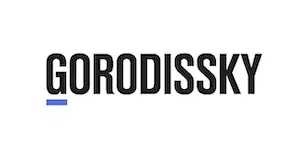- within Intellectual Property topic(s)
- in United States
- with readers working within the Business & Consumer Services industries
How are legal tools, and more specifically, patent tools, evolving through the ages when patent services continue to be among the most in-demand available legal services?
Naturally, everything started with paper, pencils, and pens. Primeval, decree-like patent specifications and drawings acquired a more formal look during the Industrial Revolution, when patents became an industry-driving force, no less significant than steam engines. Later, in the 19th century, typewriters and various card files played a leading role as tools for patent attorneys, until 1981 when IBM changed the world by introducing the first personal computer.
However, several decades still needed to pass before computer tools, which were mainly used in patent attorney work, developed into a doorway to treasuries full of information, services, specialized software, and now, human brain assistants and mental skills associates.
Modern legal professional software is rapidly evolving, offering new services, which can sometimes be more confusing than helpful.
Artificial intelligence (AI) developers augment software with legal tools, promising to replace nearly all patent attorney work. This has already been demonstrated in areas such as initial application drafting and translations – tasks they consider the most easily substitutable.
Can a balance be found between one extreme, where a patent attorney is armed by a typewriter, perhaps, and another extreme, where a patent attorney works merely to switch on an AI patent drafting, prosecution, renewal, evidence collecting, infringement claiming, and litigation representing computer-implemented tool?
To begin, we must ask: What is the minimal set of tools that a patent attorney needs to work effectively?
Must-have tools
Docketing system
First is a docketing system responsible for storing all client data, including their specific conditions and requirements. This system should be capable of deadline monitoring, integrated with an invoicing software tool, and general or specialized software to prepare and edit textual documents, and preferably, to edit patent drawings. Many systems are available on the market, each offering specific advantages.
The key question is whether to use off-theshelf systems or hire a software development company. After nearly 30 years of testing dozens of available tools in patent law practice, the most effective approach is a proprietary system, either fully custom-built or incorporating core custom components. For those aiming to build a long-term patent practice, cloud-based systems are generally not recommended.
It's preferable to own a core system capable of interfacing with any market-available software, rather than rely entirely on a software developer especially considering that in many patenting jurisdictions, patent work still represents a smaller share compared to general legal services. Tools advertised as "patent work tools" are usually, at best, slightly modified software for general legal work, and in the worst case, simple office document management tools.
Our advice is to find a small, open-minded software development team that understands what your firm's system is usually like. Resist their initial attempts to sell you a comprehensive office management document tool. Instead, educate them on your specific needs and draft a contract for your own software system that meets these needs. Although it may be a lengthy process, it will ultimately be tailored specifically to your firm's needs.
Patent search tools
Patent searches and freedom-to-operate (FTO) studies, which are becoming increasingly in demand, require access to available patent search systems, including patent databases generated by WIPO and regional and national patent offices. Here, the matter is not about tools, but rather about the searchers' knowledge and skills, allowing them to be used with the required efficiency. Knowledge and skills are necessary to develop the best available strategy, compensating for information gaps or even a lack of information in the electronic format still used by several national patent offices.
Can AI tools enhance the quality of patent searches and FTO studies? I recommend leaving aside alerts that disclose the essence of the proposed invention to AI tools, which tend to use such information unpredictably to further AI-assisted searches of other parties. AI can indeed save time for a skilled searcher, but it cannot become a skilled searcher on its own.
Translation memory tools and glossaries
Translation memory tools and glossaries are another must-have tool, especially when working with standard essential patents (SEPs), where terminology should not only be consistent across hundreds of patent applications filed over decades but also align with terminology in national language standards that are continuously updated. For example, with the rise of mobile communication applications, the terms "base station" and "mobile station" may not raise issues when finding their equivalents in national languages, while "handoff" and "handover" may still be used in some jurisdictions in their borrowed rather than translated versions. Borrowing and translation mistakes are generally tolerable until the case goes to court, regardless of infringement or invalidation, and the scope of their meaning is studied.
Can a translation mistake be corrected, and what legal effect could such a correction have? This depends strongly on the jurisdiction, but notably, the traditional loyalty in certain jurisdictions to admitting translation corrections at any time is now being reconsidered in light of third-party interests. Should a third party be concerned about what the patent applicant intended when submitting a translation of the application? Or should the national language version of the application – and later, the granted patent – be considered the only authoritative version for such a third party? If the latter approach prevails, then any translation errors could become critical. And if they are correctable at all, it would likely require narrowing the scope and carefully ensuring that no new subject matter is introduced before the correction can be accepted.
AI software for drafting patent applications
AI software for drafting patent applications is a relatively new and actively advertised tool, with its practical use found to be below the expectations of its creators. Although, in practice, it may be a useful tool to save time on drafting applications.
The primary issue with such software is that it cannot achieve its ultimate goal until a human defines it. When the human defines its goal, primarily by the set of patent claims, the essential part of drafting a patent is already over. In any case, it would be interesting to see how AI software for drafting patent applications may evolve, especially if it becomes more integrated and adequately aligned with relevant patent information resources and includes suggestion modes with explanations and references to art from which they were derived.
Mobile applications
Mobile applications are everywhere, but can they serve as a valuable asset for IP firms?
Messaging platforms available worldwide have standard communication features, but even when used in tandem with docketing systems, they cannot be regarded as a specialized tool. Moreover, many law firms do not favor the use of messaging platforms for communication with clients and prefer e-mail. The primary concerns with messaging platforms include the security of communications and the need for legal documents to be sent.
During the patent application drafting and prosecution stage, contact between the client and the patent attorney usually remains stable and requires no additional tools. But what happens after the patent is granted and there are no further tasks for the patent attorney? Or what happens when the inventor works on the application and gets the patent without the assistance of an attorney?
Gorodissky IP mobile
It's also worth considering the tools available to patent owners regarding annuities. Often, the patent office of the said jurisdiction will not remind the patent owner of annuities, which may result in failure to make timely payments.
In 2024, we announced Gorodissky IP mobile for local patent and trademark owners. Previously, there were no mobile applications available on the market to provide reminders to owners to take care of their registered rights and renew them on time. Gorodissky IP mobile can be downloaded and used free of charge, allowing users to download all registered rights, create their own monitored portfolio, set up reminders for renewals, and estimate the budget for such renewals. Further, we plan to expand this tool to send alerts regarding filed appeals and oppositions against granted rights.
Gorodissky IP mobile is available on the App Store and Google Play. We welcome suggestions to improve the application.
Conclusion
In summary, a docketing system is essential for any stable patent practice. It serves as the foundation for all subsequent systems and workflows, reflecting the operational style of the firm. Ideally, such a system should be custom designed to fit the firm's specific needs. Integrating it with existing document management and accounting systems is highly beneficial, as it enables the development of robust intermediate document scanning and loading departments.
Patent search, infringement monitoring, and FTO assistance tools are helpful, and AI features can shorten the time to obtain a result. However, AI cannot entirely replace skilled professionals.
Similarly, AI-assisted patent application drafting work is still a tool that does not function without a professional, although it can, if properly utilized, become a time-reducing factor.
Finally, the use of mobile applications in patent work is still emerging. They are most likely to develop as personal reminder assistants for patent applicants and owners, rather than as specialized messaging platforms or tools for legal advice.
The content of this article is intended to provide a general guide to the subject matter. Specialist advice should be sought about your specific circumstances.


